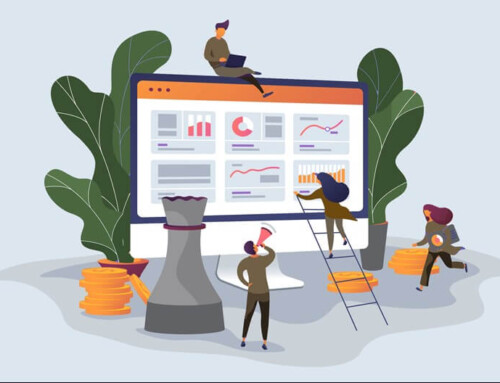Successful organizations understand that business success consists of a strong survive and thrive mentality. Great leaders aren’t afraid to step up to the challenge during times of uncertainty, whether it’s unprecedented, rapid growth; or extremely difficult, and unpredictable circumstances.
Leaders play a critical role in keeping the workforce invigorated, motivated and inspired. They need to be prepared with answers, and they need to lead by example. Quality leadership is essential to creating an agile and endurant organization.
Let’s explore the four most valuable lessons that leaders can apply to uncertain times.
Lesson #1: Every Business is Volatile
The belief that the status quo of the existing market and the way that the organization works, including its processes as well as customer and employee retention models is dangerous when it comes to ongoing business growth and longevity. Every business needs to be constantly seeking ways to improve:
- Using feedback from customers, frontline workers who interact with customers (e.g. sales, support/service, etc.), all employees, etc. to uncover issues and problems that have yet to be identified -or- opportunities that could be leveraged.
- Analyzing data for buying behaviors of customers, segmenting audiences, to become more familiar with the buying cycle, economy models and areas which have more revenue earning potential.
- Investigating online activities such as website traffic, dwell time, referring sources, social media interactions, etc. to determine what strategies are performing well, what content is getting the most engagement, dissect visitor journeys to better understand connecting points to refine content, etc.
- Stabilizing high/lows in the sales cycle through new products or services or markets that are complementary to each other. (For example: If the organizational tends to be seasonal, find solutions that complement the off-peak periods.)
- Utilizing the economy model to explore options for products or services that can sustain the organization during uncertain times. (For example: Balance virtual with physical products/services; high cost with high value but lower cost products/services.)
Lesson #2: People and Processes are Essential
Powerful leadership and a strong corporate culture are critical to an organization’s resiliency and agility. Flourishing organizations share common characteristics such as sharing common goals, are able to recognize and seize opportunities as well as have a clearly defined sense of order. However, beneath the surface, robust organizations are doing much more than just this to ensure they succeed. Organizations that thrive even in challenging times do so because:
- There is mutual respect and trust between peers and managers.
- Every employee has a sense of purpose and feels valued.
- Managers improve team functionality including constructive criticism to improve interaction and achieve goals.
- Teams are productive, have meaningful communication and collaborate to meet corporate objectives.
- Performance issues are detected early to, confront poor performance, provide solutions, improve productivity, and hold everyone in the organization accountable.
- Training and continued education to enhance skills are provided to increase employee retention, aid in career advancement opportunities, and improve employee engagement.
Lesson #3: Risks are Inevitable, But Failure is Avoidable
Benjamin Franklin wisely once said that, “failing to plan, is planning to fail.” While most organizations have contingency plans for product recalls or fires or similar, it may be difficult to plan for every risk that is possible. However, flourishing organizations do more than use basic precautions to encourage growth. How do they do so?
- Learn from past encounters.
Instead of merely acknowledging that the issue occurred, high-growth organizations dig deeper into issues, problems, and failures to understand what exactly happened, what processes could be improved, what risks could have been anticipated and mitigated, etc. More importantly, they apply what they have learned to make essential and necessary changes to prevent problems in the future. - Evaluate and understand risks.
Venturing into new markets, selling new products/services, etc. doesn’t come without risk. Businesses that are serious about growth understand that risk is part of the game. However, before going forward, these organizations spend time investigating the market to understand the audience, buying cycle, needs, etc. They also evaluate the potential risks and plan for, mitigate or try to minimize their impact. - Anticipate, prepare and adapt to change.
The economy, business environment, industries, markets are always evolving and can do so quickly. High-growth organizations keep a regular pulse on what’s happening by listening to feedback from both customers and frontline workers, as well as reading industry trade publications, using social listening tools to study market trends where target audiences may be online, etc. These methods help to anticipate and plan for changes.
Lesson #4: Challenges Frequently Lead to Improvement Opportunities
Times may be uncertain for all businesses. Some may see growth due to unprecedented demand. Others may be facing significant challenges due to the global impact of COVID-19. However, there are challenges and opportunities in each scenario. Let’s address each of them:
- Rapid Growth
Sudden growth can be exciting, but it can also be a time of intense pressure. This can lead to some unforeseen issues. Buy addressing these challenges before they become problems, they can be converted into opportunities that capitalize on the growth that already exists.
| Challenge | Improvement Opportunity | Solution |
| Cash flow | Project cash needs based upon growth trends. | Start gathering additional financial resources now. |
| Negative Reviews or Poor Customer Feedback | Manage customer expectations and anticipate staffing needs. | Start looking for additional help now, and onboarding new hires, even if part-time in nature. |
| Employee Fatigue and Low Morale | Engage in open conversations with employees about workload | Utilize retention strategies, cross-train employees, and hire additional help. |
| Operational Inefficiency and Expansion Demands | Seek options to expand with minimal loss in productivity and maximize cost control. | Consolidate training through online sources or use contractors who have skills that can streamline processes effectively. |
- Business Disruption
Business continuity plans may account for many of the common issues that can cause organizations to fail. However, it often can’t adapt to rapidly changing and unknown scenarios that have not been previously encountered. However, resilient organizations understand that minimizing business disruption, even in the smallest of ways, can have a big impact later.
| Challenge | Improvement Opportunity | Solution |
| Income Loss | Focus on brand building, customer loyalty, and networking. | Continue marketing, but through sensitivity to the conditions of the environment which may change daily. |
| Price Sensitivities | Analyze pricing structures and programs seeking input from frontline employees as well as customers. | Consider options such as loyalty programs, bundling, payment forbearance, balloon or backload payment options, etc. instead of discounts. |
| Communication with Stakeholders | Address stakeholders transparently and with messages that are essential rather than leading to fatigue, especially on global crisis matters.
|
Learn to listen through participation in trade, industry and focus groups – as well as where target markets exist. |
| Isolation | Become an influential leader that cultivates communities to work together to pull the organization forward. | Identify people and nurture relationships with people who aren’t squeamish with uncertainty, embrace challenge, are committed to outcomes, accelerate learning curves, know their strengths, and who see a bigger picture.
|
In uncertain times, there are opportunities for leaders to explore as well as many lessons that can be applied to build stronger and more agile organizations. Leaders who utilize these lessons will succeed in helping their organizations survive and thrive in these challenging times.
For more information about how Gavel International can help strengthen your organization, please contact us.
This article was last updated on May 9, 2025
- Why Hustle Culture Can Harm Sales Success – and How to Repair the Damage - June 30, 2025
- Enhance Sales Through Team-Friendly Storytelling - May 5, 2025
- Unlocking Excellence: The 7 Traits of Top Performers and Their Impact - April 14, 2025






